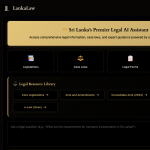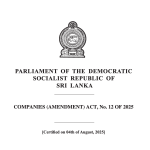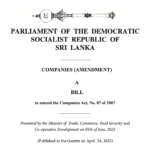In the digital age, where commerce and communication increasingly occur online, traditional methods of authentication, such as handwritten signatures, are being replaced by electronic signatures. This shift has prompted legal and technical challenges, requiring courts and legislatures worldwide to adapt. As e-commerce becomes a dominant driver of economic activity, the need for robust electronic signature frameworks is paramount to ensure secure and legally binding transactions.
This article explores the concept of electronic signatures, their significance, associated challenges, and the legal frameworks addressing their use.
Understanding Electronic Signatures
An electronic signature is data in electronic form, attached to or logically associated with other electronic data, serving as a method of authentication. Advanced forms, such as digital signatures, leverage cryptographic techniques to enhance security and ensure document integrity.
Key purposes of electronic signatures include:
- Authentication: Verifying the sender’s identity.
- Consent: Indicating intent to be legally bound.
- Document Integrity: Ensuring the contents remain unaltered.
While simple electronic signatures, such as scanned images or typed names, may suffice for basic transactions, advanced electronic signatures employ public key cryptography, uniquely linking the signature to the signatory. These advanced electronic signatures include features such as:
- Unique Identification: Ensuring that each signature can be distinctly traced back to the signer.
- Tamper Evidence: Detecting any subsequent changes to the signed document.
- Controlled Access: Requiring private keys held solely by the signer to create the signature.
Historical Context and Importance
Traditionally, signatures have played a vital role in validating contracts, ensuring clarity and agreement between parties. However, reliance on paper-based formalities poses challenges in the digital realm:
- Efficiency: Paper processes slow down commerce and increase costs.
- Globalization: Internet-based transactions span borders, complicating traditional legal frameworks.
- Security: Open networks like the Internet are vulnerable to tampering and fraud.
Digital signature technology, supported by trusted certification authorities, bridges these gaps by offering a secure and verifiable alternative to physical signatures. This transition has been driven by:
- The increasing volume of high-value transactions conducted online.
- The growing need for secure methods to prevent repudiation and fraud.
- The rise of remote work and decentralized business operations, which demand digital solutions.
Applications in E-Commerce
Electronic signatures are indispensable in modern e-commerce, enabling efficient and secure transactions across various contexts:
1. Business-to-Consumer (B2C)
For B2C transactions, electronic signatures simplify the purchase process. For example:
- Online Contracts: Agreements for digital subscriptions or services are completed seamlessly with a click-to-sign feature.
- Consumer Protection: E-signatures ensure clarity and provide records for dispute resolution.
2. Business-to-Business (B2B)
In B2B transactions, where higher stakes and complex contracts are involved, electronic signatures provide:
- Legal Certainty: Ensuring contracts are binding and enforceable.
- Efficiency: Reducing time spent on physical paperwork and approvals.
3. Government and Public Administration
Governments leverage electronic signatures to:
- Enable e-governance initiatives such as e-filing tax returns.
- Reduce administrative costs by digitizing official documents.
4. Cross-Border Transactions
Electronic signatures facilitate international agreements by eliminating the need for physical presence, making cross-border commerce more accessible.
Challenges and Limitations
Despite their advantages, electronic signatures face several challenges:
1. Security Concerns
- Open Network Vulnerabilities: Data transmitted over the Internet can be intercepted or altered.
- Identity Theft: Unsophisticated electronic signature methods are prone to misuse.
2. Legal Uncertainty
- Jurisdictional Differences: Inconsistent regulations across countries lead to confusion.
- Court Recognition: The evidentiary value of electronic signatures is sometimes questioned.
3. Implementation Barriers
- Cost and Complexity: Advanced systems like digital signatures require significant investment in infrastructure and training.
- Access Inequity: Smaller businesses and consumers may lack resources to adopt advanced e-signature technologies.
4. Fraud and Disputes
- Forgery Risks: Although harder to forge than handwritten signatures, advanced electronic signatures are not completely immune to breaches.
- Dispute Resolution: Proving the authenticity of a signature can be complicated in the absence of robust frameworks.
Legal Recognition and Frameworks
Global efforts to standardize the recognition and regulation of electronic signatures have led to significant legislative advancements:
1. UNCITRAL Model Law (1996)
- Provides a foundational framework for electronic commerce, recognizing electronic signatures as legally valid.
2. U.S. Electronic Signatures in Global and National Commerce Act (2000)
- Ensures electronic signatures are as enforceable as handwritten ones, supporting interstate and international transactions.
3. EU Directive on Electronic Signatures (1999)
- Introduces a two-tier system distinguishing basic and advanced electronic signatures, with greater legal privileges for the latter.
4. Singapore Electronic Transactions Act (1998)
- Establishes guidelines for secure electronic signatures and mandates certification by trusted authorities.
Proposed Solutions for Enhancing Adoption
To overcome the challenges and foster widespread adoption of electronic signatures, several measures can be implemented:
1. Public Awareness
Educate businesses and consumers about the benefits and security of electronic signatures through targeted campaigns and training programs.
2. Legal Harmonization
Promote international cooperation to create unified standards, simplifying cross-border recognition and enforcement.
3. Technological Innovation
- Invest in stronger encryption methods and user-friendly interfaces.
- Develop blockchain-based solutions to ensure immutable and transparent signature records.
4. Incentives for Adoption
Governments can offer subsidies or tax benefits to organizations implementing electronic signature systems, encouraging broader use.
5. Regulatory Clarity
Clear and comprehensive guidelines should define acceptable signature methods, reduce ambiguity, and enhance trust.
Conclusion
Electronic signatures represent a transformative step toward a digital future, fostering efficiency, security, and convenience in global commerce. However, their widespread adoption requires addressing technical, legal, and societal challenges. By building robust legal frameworks, promoting trust through education, and leveraging technological advancements, electronic signatures can become a cornerstone of the modern digital economy. As nations refine their e-signature laws, they pave the way for seamless global commerce and governance, ensuring that the digital age benefits all stakeholders.














